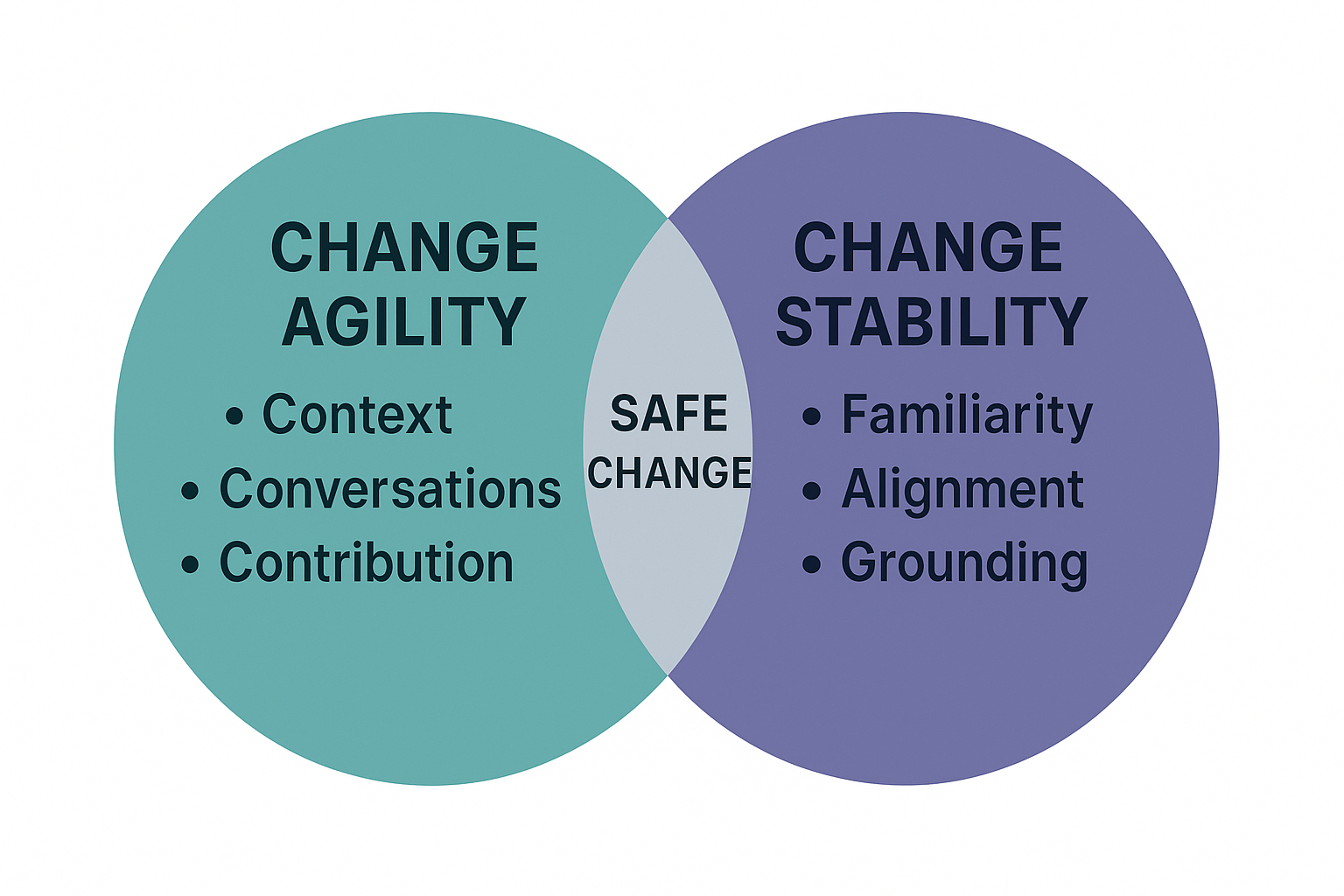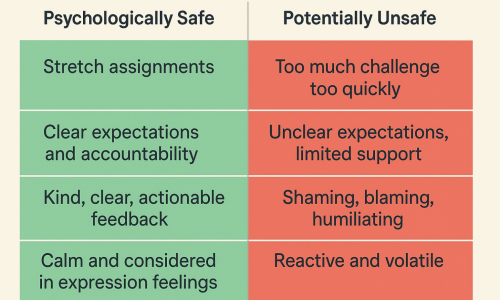Following my last blog: The Crucial Role of Managers in Addressing Psychosocial Risk – And How Coaching Can Help, I’ve had lots of questions about psychosocial risk and managing change, so thought I’d share some of my thoughts here.
Change projects are essentially about people. A successful change depends on getting people on board. But this takes us into the murky area of psychosocial risk. Should we stop initiating change because of the risk? Absolutely not. Whether you’re a leader or a senior technical expert, a core part of your role is to find new ways to create value for your organisation. If you stagnate, you don’t survive.
To keep people psychologically safe during change, I believe we need to support them in two distinct domains which I’ve named Change Agility and Change Stability.
1. Change Agility
This involves building the capacity to adapt and engage. It includes three key activities:
a) Context – Help people understand why the change is needed, framed within the organisation’s strategy.
b) Conversations – Create opportunities for one-on-one or small-group discussions. People don’t resist change because they’re change-resistant—they resist when they can’t make sense of the change within their personal frame of reference. Encourage questions and dialogue to help people align their mindset with the proposed change.
c) Contribution – Give people the opportunity to contribute. They might help design solutions to the challenge driving the change or shape how the change strategy is implemented. Involvement builds ownership.
2. Change Stability
This focuses on giving people psychological anchors during change. It includes three key activities:
d) Familiarity – Highlight what’s staying the same: familiar processes, systems, people, or routines. These act as a tether in unfamiliar waters.
e) Alignment – Reinforce how the change supports the organisation’s purpose, and how each person’s work continues to contribute to that purpose.
f) Grounding – Anchor the change in the organisation’s values. Not only should the outcome of the change align with the values—but the process of change should also consistently reflect them.
Managing change safely means recognising and addressing psychosocial risk. By supporting both agility and stability, I believe we can create the conditions for people to not just survive change, but engage, adapt, and thrive.



